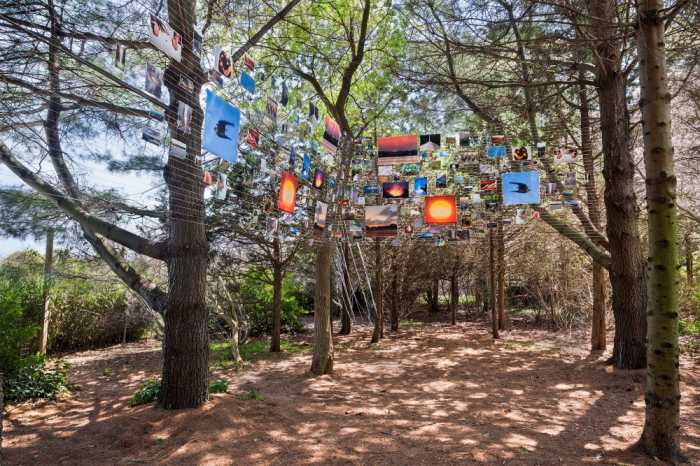 Common chicory, otherwise known by its Latin name as Cichorium intybus, is in full bloom around the Hicksville landscape. This bluish wildflower, which is a naturalized plant from Europe, can be found in waste spaces, open fields and along roadsides throughout Long Island. Chicory is a distant relative to dandelion, and can be used in its entirety, unlike its yellow cousin. Chicory’s leaves make a great addition to a tossed salad, the seeds can eaten, and the roots can be burned and ground as a substitute for your morning coffee. The roots are also the source of inulin, which is a soluble fiber. A cup of greens is about seven calories, and has as much potassium as a half cup of strawberries. While chicory has many benefits, I caution you to read up on preparation before you use it in your meals.
Common chicory, otherwise known by its Latin name as Cichorium intybus, is in full bloom around the Hicksville landscape. This bluish wildflower, which is a naturalized plant from Europe, can be found in waste spaces, open fields and along roadsides throughout Long Island. Chicory is a distant relative to dandelion, and can be used in its entirety, unlike its yellow cousin. Chicory’s leaves make a great addition to a tossed salad, the seeds can eaten, and the roots can be burned and ground as a substitute for your morning coffee. The roots are also the source of inulin, which is a soluble fiber. A cup of greens is about seven calories, and has as much potassium as a half cup of strawberries. While chicory has many benefits, I caution you to read up on preparation before you use it in your meals.
I knew the wildflower as “wild chicory.” We often referred to it as “that pretty purple flower that grows in the summertime.” I always wanted a patch of it in our yard, and would stealthily stash buds in my sock drawer to dry them out. Mom found them one day during her daily distribution of folded laundry. I came home from school to find that my stockpile was sitting at the bottom of the trash can. While I made my argument that the flowers would be a beautiful addition to our yard, Mom countered that there wasn’t enough room in the yard for more flowers. I sighed and resigned myself to a yard without chicory.
Dad always loved common chicory, too. Oftentimes, when we were out driving together, he would excitedly point it out, as though it were the greatest thing since sliced bread. Although he would make mention of other wildflowers such as Butter and Eggs and Queen Anne’s Lace, chicory was always his favorite.
One summer evening, Dad and I took a drive up to Syosset to grab something that he’d left in the office. We drove home via his Miller Road shortcut, when he suddenly stopped the car. On the side of the road was one of the largest patches of common chicory that we’d ever seen. Excited about this discovery, Dad pulled the station wagon onto the shoulder and picked a very large bouquet for Mom. It was an absolutely beautiful arrangement. He picked a few Queen Anne’s Lace, just to break up the monotony of the sea of purple. I held the arrangement in my arms, eager to see Mom’s reaction to Dad’s thoughtfulness.
Mom was thrilled as Dad presented her with the purple spray of wildflowers. She promptly grabbed a vase from the closet and set the bouquet on the kitchen table, so that we could all admire it. About an hour later, I heard a shriek from the kitchen. I ran in to find Mom, who was crouched under the table with a newspaper. She was swatting at the dozen or so tiny ants that had marched their way out of the flowers. The chicory was now a pale white color, for once cut and placed in water, the color faded right out. Mom asked me if I’d felt any ants crawling on me on the way home. I had one ant on my arm, but didn’t think anything of it. After that, the only bouquets Dad brought home came from Boos Florist. But we all still loved to look at the chicory that grew in bunches along the roadways.
As I walked along Miller Road this week, I noticed a large growth of the lavender biennial in the exact spot where Dad and I had picked that bouquet for Mom. After I shot off a few pictures of my favorite wildflower, I glanced up at Heaven and smiled. I’m sure Dad was looking down excitedly at that patch of chicory, too. And I’ll bet he was smiling.

































